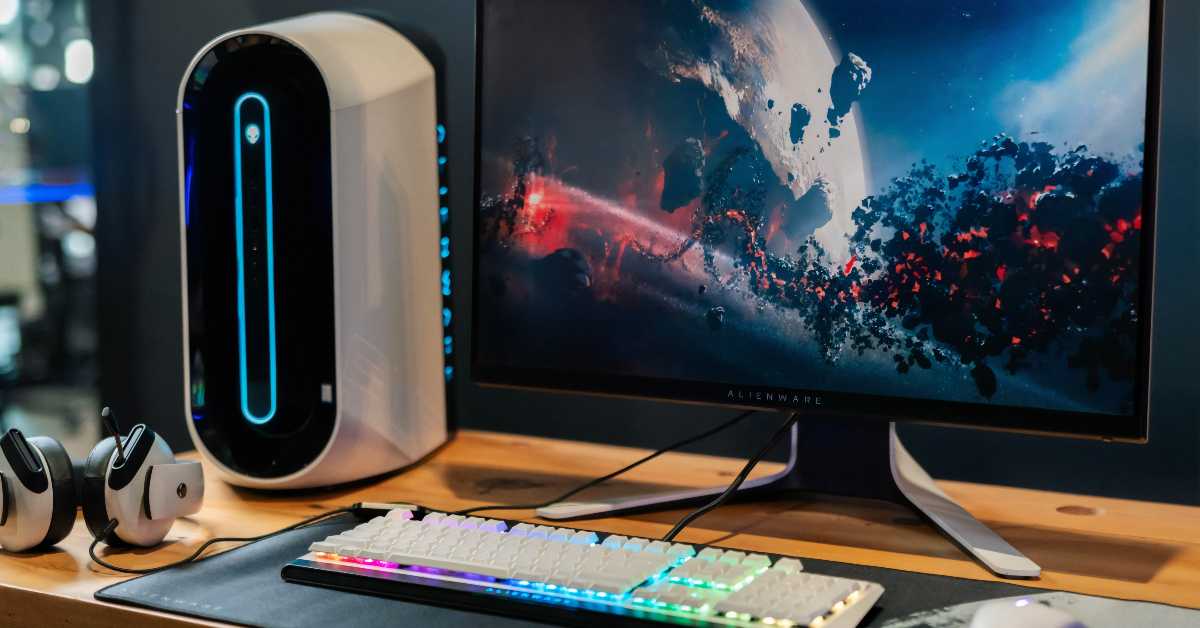1080p Vs 1440p Vs 4K: Which Resolution Is Best For Gaming

Monitor resolution is a key factor to keep in mind while purchasing a new monitor. While most people do have high-level knowledge about different resolutions, but, there are some other things you need to know. 1080p, 1440p, and 4K are the most popular and common resolutions you can find in the market. Besides these three types of monitor resolution, there are also 720p, 5K, and 8K. In this article, we keep our focus on 1080p vs 1440p vs 4K.
What Is Resolution?
Contents
- 1 What Is Resolution?
- 2 Different Screen Resolutions
- 3 Size Is Closely Related To Resolution For Better Image Quality
- 4 Refresh Rate For Smoother Experience
- 5 Response Time For Fast Paced Gaming
- 6 1080p Vs 1440p Vs 4K: Usage
- 7 1080p Vs 1440p Vs 4K: Cost
- 8 1080p Vs 1440p Vs 4k: Pros And Cons
- 9 1080p Vs 1440p Vs 4k: Conclusion
The resolution represents the total count of pixels that can fit into a screen. Pixels are the smallest unit of any image. Each pixel carries single information and color. And by combining with other pixels an image is displayed. Typically an FHD aka 1080p aka 1920×1080 resolution monitor contains 1920 pixels horizontally and 1080 pixels vertically. So a total number of a 1080p monitor can have 1920 x 1080 = 2073600 pixels.
The higher the resolution, the more the pixel count, thus the sharper the image will be. However, in terms of image sharpness, the monitor size can play a bigger factor. More on that later.
Different Screen Resolutions
- 1280 x 720 – 720p or HD
- 1920 x 1080 – 1080p or FHD
- 2560 x 1440 – 144p or QHD
- 3200 x 1800 – 1800p or QHD+
- 3840 x 2160 – 2160p or Ultra HD or 4K
- 7680 x 4320 – 4320p or 8K
1080p Or FullHD
1080p or 1920 by 1080 is the minimum resolution you should go for when buying a new monitor. A 1080p resolution monitor with a 60Hz refresh rate is a sweet start for most new budget PC builders and PC gamers. Even current-gen console PS5 and Xbox series X aims for this minimum resolution. If you are a video creator or photo editor, 1920 by 1080p monitor should be your least minimum option.
1440p Or Quad HD
A Quad HD or 1440p monitor consists of 2560 pixels horizontally and 1440 pixels vertically, making this a great upgrade over 1080p. A 1440p resolution monitor has 4 times more pixel counts than a 720p and 78% more pixels than 1080p. This resolution is often considered PC exclusive as most creative professionals or competitive gamers use this resolution. Also, this resolution produces a much sharper image than Full HD.
2160p Or Ultra HD Or 4K
The 4K displays have a resolution of 3840 by 2160. So the image will be very sharper and detailed. A 4K screen resolution has 4 times more pixel count than 1080p. 4K is a true successor of 1080p. Although the 4K is more popular on the TV resolution side nowadays than used as a monitor for the most part. 4K resolution is often used among highly experienced graphics designers, creative professionals, or movie makers.
Of course, 4K’s are more expensive than Full or Quad HD monitors and kind of overkill for most users. Gaming on 4K seriously requires a powerful PC with the latest CPU and GPU.
Size Is Closely Related To Resolution For Better Image Quality
Not only just resolution, for a better image quality you also need to consider the size. A wrong monitor size with a wrong resolution could lead to a bad experience. Most 1080p monitors come with a screen size of 24-inches. However, there is also 27-inch and 32-inch size monitor available for 1080p resolution. But because the screen is bigger the pixel density aka Pixel Per Inch or PPI becomes lower.
For a 24-inch 1080p monitor the PPI or number of pixels per inches is 92PPI. Whereas a 27-inch and 32-inch have a PPI of 81 and 68 respectively. You can measure PPI for different sizes and resolutions here.
On the other hand, 27-inch or 32-inch is a perfect size for a 1440p monitor. Like the 1080p the same rule applies for 1440p as well. You don’t want the size too big that the image on the screen will become less sharp even if you have a 1440p resolution.
For a 4K monitor 32-inch or 40-inch is considered the standard size. Also, 4K is not for everyone, unless you are a professional. Moreover, a 27-inch size for a 4K displays the quite unnecessary as 27-inch is so small for 4K that it becomes difficult to see all the fine details. Even worse on a 24-inch screen, the image will be so sharp, you have trouble while reading on the display.
So for 1080p resolution 24-inch, 1440p resolution 27 or 32-inch and for 4K 32 or 40-inch size is recommended.
Refresh Rate For Smoother Experience
Monitor refresh rate is how many times the image on the screen updates every second. Which is measured in hertz or Hz. The higher refresh rate a monitor has, the smoother the screen will be. Most monitors have a least refresh rate of 60Hz, which is decent in most use cases. But if you are a gamer you may want a higher refresh rate than 60, maybe 120Hz, 144Hz, or even 240Hz. A 240Hz refresh rate gaming gives you a much better experience than a typical 60Hz.
1080p monitors can support up to a 360Hz refresh rate. The numbers of 1080p monitors beyond 240Hz refresh rates are less common. Folks often prefer at least 120 to 144Hz for 1080p resolution. A 1440p display with a 144Hz refresh rate is a sweet combination without breaking the bank. Even for 4K, you can get a 144Hz refresh rate.
Response Time For Fast Paced Gaming
A response time is how quickly a pixel can change its information. Meaning one shade of gray to another or gray to gray response. It is measured with milliseconds(ms). Higher response time can result in motion blur. It is highly recommended to have a response rate of a minimum of 4ms to reduce the ghost effect caused by higher response time. If you are a fast-paced gamer then a 1ms response rate you should be looking for.
Response time is tied with the monitor panel. TN panel has the lowest 1ms response time. IPS has 4ms and some premium VA panels can have the lowest response time, but they usually have a higher response time than the other two.
1080p Vs 1440p Vs 4K: Usage
A 1080p display is the starting point for any budget PC builder. It is a standard resolution for gaming, productivity, watching movies, or any office work. If you’re building a new PC and budget is low a 1080p resolution monitor is all you need.
1440p is a good upgrade over 1080p. It’s often used among FPS gamers, video creators, graphics designers. If you’re planning to build a high-end gaming PC or want a monitor upgrade, 1440p is a good choice.
You might not want a 4K display unless you’re some professional in a certain field like graphics design, movie creation, or you won’t watch 4K movies. 4K is overkill for normal users and gamers. Also, it is much costlier and requires a powerful PC.
1080p Vs 1440p Vs 4K: Cost
1080p is the most cheaper option you can get. Then comes 1440p and 4K. 4K is the most expensive one. Not just resolution, monitor size, as well as refresh rate, can change the price significantly. For example, A 27-inch 1920 x 1080p 240Hz display costs you the same as a 1440p 120Hz display.
Surprisingly the price difference between a 1440p and 4K monitor is not much. But still quite pricey compared to a 1080p display. Also, you need a PC with the latest configuration for output that much high resolution with 60+ frames per second for gaming. That’s lead the budget significantly high.
1080p Vs 1440p Vs 4k: Pros And Cons
1080p
Pros
- Cheaper and most affordable than 1440p and 4k.
- 360Hz refresh rate.
- Best for first-time PC builders and budget gamers.
- In terms of size, a 1080p monitor comes with a 24-inch screen size, so less occupied space on the desk.
Cons
- Suitable for smaller screen size.
- Less detailed than 1440p and 4K.
1440p
Pros
- Best upgrade over 1080p.
- Good for fast paced gamer, editing and content creation.
Cons
- Costlier than 1080p.
- Require a high-end PC.
- Not good for consuming media on full resolution
4K
Pros
- 4-times higher resolution than 1080p.
- Best for watching 4K content
- Suitable for professional graphics deigners, 3D artist and movie creators.
- Best for latest gen console gaming
Cons
- Highly expensive.
- Low refresh rate.
- Not for fast paced compitetive gaming.
- Requires a high-end PC with latest hardware
1080p Vs 1440p Vs 4k: Conclusion
So which one is better? Each has its own pros, cons, and different use cases. Which one you need depends on your use case and personal preferences. If you are a budget gamer then 1080p is the best option. If you have a decent PC then a 1440p 144hz display can enhance your gaming experience. For all the professional
